by Ben Hoffner | Nov 5, 2025
When making plans for a fall or spring garden it is important to consider which methods of planting and raising your crops will work best for you. Traditional ground plots can be very effective but like with anything there can be negatives. Issues with space and soil fertility will be your biggest challenges with ground plots. Raised Beds are a very popular choice for several reasons like being aesthetically pleasing, mitigation of poor or no soil, decreases runoff/erosion, positive use of space, and maintenance.
Site Selection – Before creating your raised bed there should be a couple of key factors that are considered. Sunlight is the most important factor. Areas where the raised beds are constructed must have full sun for a minimum of 5 to 6 hours per day for best results. It is ideal to have morning sun do it less intense heat in the morning and dries due off the plant. Staying clear of structures, large trees, tree lines will help to have ample sunlight. Access to a water source close by is imperative for a successful raised bed. Make sure it is placed on well drained level ground away from tree roots that could compete with your crops.
Construction – The most “traditional” raised bed structure are made with wood. Consider pressure treated vs. non-treated wood. Pressure treated wood post 2004 is unlikely to contaminate food crops and will have a longer shelf life. Non-pressure treated will be a less up-front cost but will end up costing more overtime due to having to replace the boards earlier and more often. Screws and nails are appropriate methods to secure the corner but be sure to dispose of them correctly. Concrete corner blocks found at stores like Lowes or Home Depot have become a popular mothed to secure the corners. A 4’x8’ bed is the most popular size due to easy maintenance and construction. To construct this sized bed all you will need is three 2”x6”x8’ boards and four concrete corner blocks. After the outline of the bed has been created, you will need to create a base layer to kill the grass below, so it does not grow up through the soil. You can use materials like cardboard or mulch to accomplish this. The raised beds should be filled with either a mix made for raised beds or a 50-50 mix of compost/organic matter and topsoil. 1 cubic yard of material will fill a 4’x8’ raised bed.
Raised beds can be an effective and fun way to garden at home. Consider all factors discussed to make sure your raised beds are successful. For more information on raised beds contact your local UF/IFAS Extension Office. 
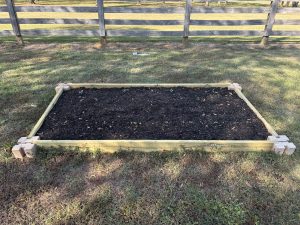
4’x8′ Raised bed – Photo taken by Ben Hoffner – Jefferson
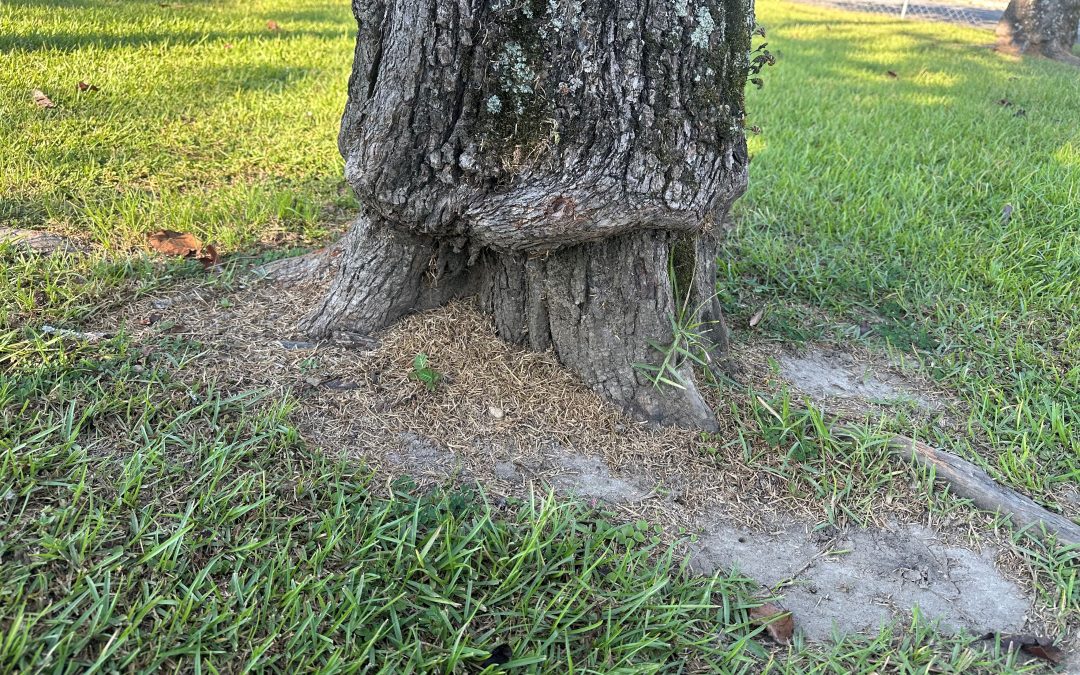
by Ben Hoffner | Sep 11, 2025
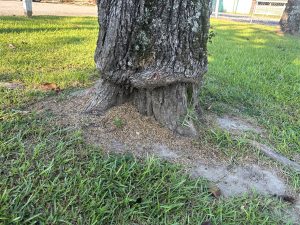
Photo credit to Daniel Leonard, Calhoun County Extension Agent
When maintaining proper care of your trees and shrubs in your lawn or landscape it is important to not damage stems and trunks. It is best practices to keep the area around the tree clean, but it needs to be done properly. Mowing and weed eating is not recommended due to the possibly of severe damage to the trunk and stems. Repeated damage from mowers and weed eaters cause damage called girdling. There are a few very effective ways to protect the trunk and stems from damage such as mulching and using tree rings/tubes.
Repeated damage to the base of the tree and stems will affect the cambium layer. The cambium layer is a thin layer of living tissue directly under the bark of the tree, and it supports the growth and well-being of the tree, actively dividing cells located between the xylem (wood) and phloem(bark). Constant damage of this layer will cut off the flow of carbohydrates to the roots, which will cause the tree to die. This layer is the green material you see after the bark of the tree has been damaged. It is imperative to keep the cambium layer damage free to insure the best tree health.
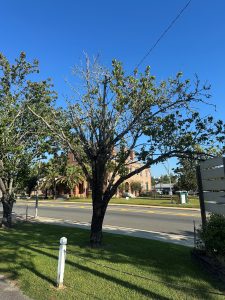
Photo credit to Daniel Leonard, Calhoun County Extension Agent
Taking preventive measures will ensure the prolonged life of your tree. Using mulch around the perimeter of the tree for protection from injury is the most effective method of protection. There are different mulch types like straw, bark, leaves, needles, wood or grass. These are examples of organic mulches. Tree rings and tubes can be helpful to protect young trees. If mulch is not the best option for the plant, other materials such as cut sections of plastic pipe or rubber tires could be an option for protection.
Mulch is not only a great way to protect your trees from injury. It also helps with retaining moisture, erosion control, weed suppression, organic accumulation and aesthetic appeal. Following simple guidelines when using mulch will make sure that you are maximizing the material used. Maintain a 2-to 3-inch layer around your established trees. Avoid “volcano mulching”. “Volcano mulching” is when mulch is piled against the base of the tree, it holds moisture. High amounts of moisture can cause the trunk to rot.
To prolong the life of your trees and shrubs you must protect them from injury that can cause girdling. Avoid constant contact with lawn mowers and weed eaters that will destroy the cambium layer. Using mulch is a very effective way for protection as well as retaining moisture, erosion control, weed suppression, organic accumulation, and aesthetic appeal.
For more information contact your local UF/IFAS Extension Office.
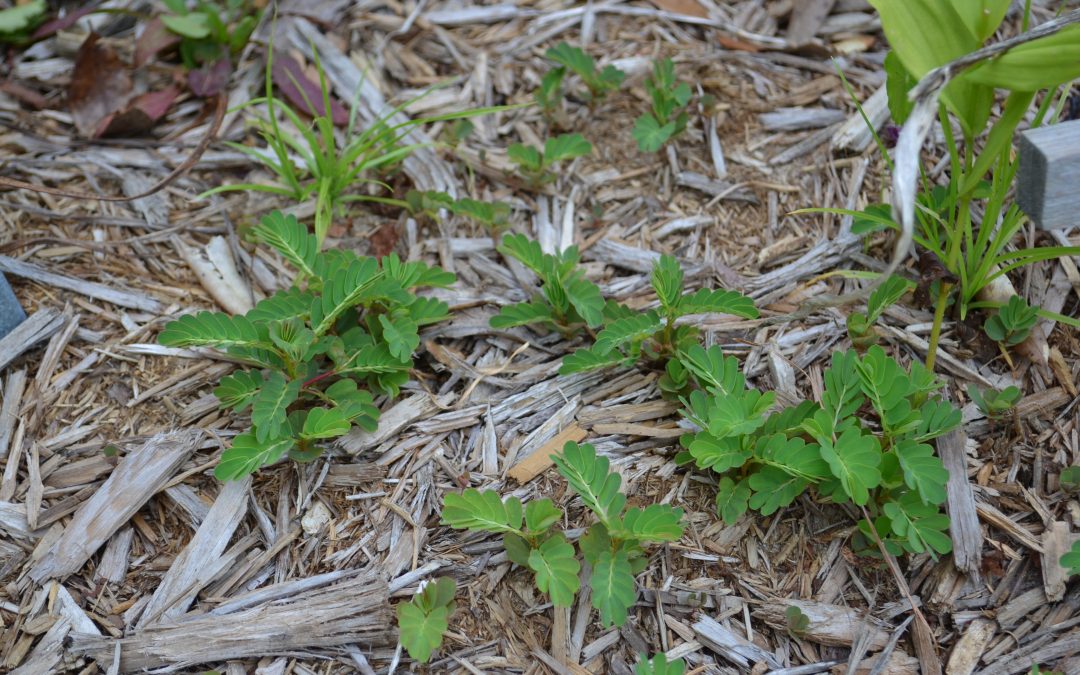
by Ben Hoffner | Jun 20, 2025
by Ben Hoffner, UF IFAS Jefferson Extension
As we continue to tend to our summer landscapes and gardens, it is important to have a proper weed control plan in place. Unwanted plants that grow in your garden or landscape can cause for poor germination rates and poor quality of your crop. Weeds deprive your plants from essential nutrients, water, and sunlight that they need to thrive. There are many methods of weed control, but it important to make decisions based on what control method will work best for you.
Taking Soil Tests and Fertilizing are a good place to start in your plan for weed control. Unwanted plants thrive in low quality soil while your plants perform poorly. On the other hand, over fertilizing can cause for an increase in weed pressure. Knowing your pH and nutrient levels are essential to weed control. The soil test will provide you with specific recommendations for your plants.
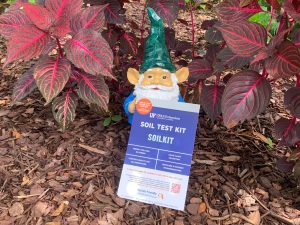
The SoilKit will provide both pH and nutrient analysis for turfgrass and plants.
Mulching is one of the most effective ways to suppress weed pressure after you have planted your crop or landscape. Organic mulches such as pine bark and pine straw are very effective and have other added benefits such as improving soil characteristics, increasing plant growth, and the potential to increase your soil moisture. Inorganic mulches such as rocks and pebbles can also be very effective. While inorganic mulch is effective, they are more costly and do not add any other benefits to your soil. While ground cloth/ landscape fabric is very popular and challenging to install, it can be used for more than one season. Be sure not to use landscape fabric around plants since it can interfere with water and air movement into the soil. Mulch depths of 2 to 3 inches are important for the most effective weed control.

Organic mulches have several purposes in the landscape – weed control, conserving moisture, and aesthetics.
Cultivation is another method of weed control. Tilling and hand pulling weeds is very effective and allows you to see what weeds you are dealing with. Tilling also enhances soil structure and allows for easier uptake of water and oxygen in your soil. This method is more labor and time intensive but can more cost effective.
Chemical Control such as the use of a preemergence herbicide or spray herbicide can be very effective. It is important to have a proper ID of your weeds before application because there a specific product for specific weeds. Understanding what weeds, you are dealing with and how to read an herbicide label will ensure for a high success rate for chemical control.
The weed control methods discussed above can be very effective if done properly. It is important to understand what practices will work best for you as this will save time and money. If you have any questions regarding weed control in your landscape or garden, please reach out to your local UF/IFAS Extension Office for more information.







